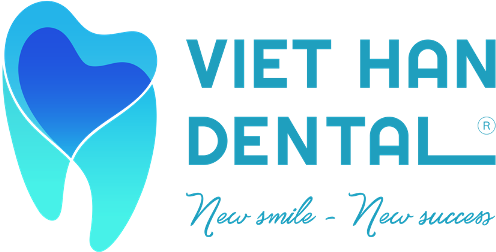Wisdom teeth, especially impacted or misaligned ones, can cause significant oral health issues. Extracting wisdom teeth is often more complex than regular tooth removal and requires careful consideration. This article, reviewed by Dr. Khong Van Quan of Viet Han Dental Clinic, provides a comprehensive guide to wisdom tooth extraction.

Nội dung
- 1. What Are Wisdom Teeth?
- 2. When Should Wisdom Teeth Be Extracted?
- 3. Does Wisdom Tooth Extraction Hurt?
- 4. Wisdom Tooth Extraction with Piezotome Technology: Pain-Free and Complication-Free
- 5. Accelerated Healing with PRF Technology
- 6. Wisdom Tooth Extraction Procedure
- 7. Dietary Recommendations Post-Extraction
- Viet Han Dental Clinic
1. What Are Wisdom Teeth?
Wisdom teeth, also known as third molars, are the last teeth to emerge and are located at the very back of the mouth. Typically, they erupt between the ages of 17 and 25—often referred to as the age of maturity. However, these teeth frequently raise debates due to their questionable functionality and tendency to cause complications.
2. When Should Wisdom Teeth Be Extracted?
- Misaligned, impacted, or partially erupted wisdom teeth that press against the second molars.
- Persistent pain or prolonged infections caused by wisdom teeth.
- Abnormally shaped wisdom teeth that are difficult to clean, leading to food impaction with adjacent teeth.
- Wisdom teeth affected by periodontal disease or severe decay.
- As part of orthodontic treatment.
- Jaw asymmetry caused by misaligned jawbones due to wisdom teeth.
- Decay that spreads easily to neighboring teeth.

3. Does Wisdom Tooth Extraction Hurt?
The prospect of pain during wisdom tooth extraction is a common concern, especially for those experiencing wisdom tooth growth for the first time. Positioned at the far end of the jaw and deeply anchored, wisdom teeth are often surrounded by complex nerve networks, making their removal more challenging than that of other teeth.

However, with modern advancements in dental technology, wisdom tooth extraction is now far less daunting.
4. Wisdom Tooth Extraction with Piezotome Technology: Pain-Free and Complication-Free
4.1 Soft Tissue Preservation
Piezotome ultrasound waves target only the hard tissues, specifically the tooth, without affecting the surrounding soft tissues or jawbone.
Wisdom teeth are located at the very back of the mouth.
4.2 Quick Procedure
Piezotome technology reduces the risk of numbness by protecting soft tissues during the cutting process. While it minimizes nerve damage risks, other factors may still contribute to nerve injury.
4.3 Reduced Swelling
For cases involving large tooth roots requiring sutures, Piezotome waves help protect the surrounding soft tissues, enabling faster wound healing.
4.4 Less Jaw Strain
Unlike traditional methods, Piezotome technology eliminates the need for excessive force to keep the mouth fully open.
5. Accelerated Healing with PRF Technology
Platelet-Rich Fibrin (PRF) is an advanced healing technology involving the extraction and centrifugation of the patient’s blood to concentrate platelets while removing unnecessary components. This method accelerates the repair of damaged tissues and blood vessels.

Platelet-Rich Fibrin (PRF) is an advanced healing technology
Compared to traditional extractions requiring 3–4 weeks for recovery, PRF technology significantly reduces healing time, with noticeable improvements within the first week.
6. Wisdom Tooth Extraction Procedure
- Examination and X-ray Imaging: A comprehensive evaluation to assess the position and condition of the wisdom tooth.
- Oral Cleaning and Sterilization: Ensuring a hygienic environment for the procedure.
- Local Anesthesia: Administered to ensure a pain-free experience.
- Tooth Extraction: Performed with precision using modern technology.
- Post-Extraction Care and Follow-Up: Patients are guided on oral care practices and scheduled for a follow-up visit.

7. Dietary Recommendations Post-Extraction
Foods to Eat:
- Soups, porridge, oatmeal, eggs, ice cream, pudding, yogurt, mashed fruits, smoothies, soft noodles, vermicelli, and clear broth-based dishes.
Foods to Avoid:
- Hard, chewy foods.
- Spicy or hot dishes.
- Sweet or sour foods.
- Alcoholic beverages such as beer and wine.
Viet Han Dental Clinic
Team of Doctors 100% graduated from Ho Chi Minh City/Hue/Hanoi University of Medicine and Pharmacy
- Address: 60 Quang Trung, Van Thang, Nha Trang
- Hotline/ Whatsapp: 0787 505 577
- Website: nhakhoaviethan.vn
- Fanpage: Viet Han Dental Clinic
- Instagram: viethandental
- Kênh Youtube: Viet Han Dental
- Group facebook: ĐỒNG NIỀNG VIỆT HÀN – VIET HAN BRACERS

